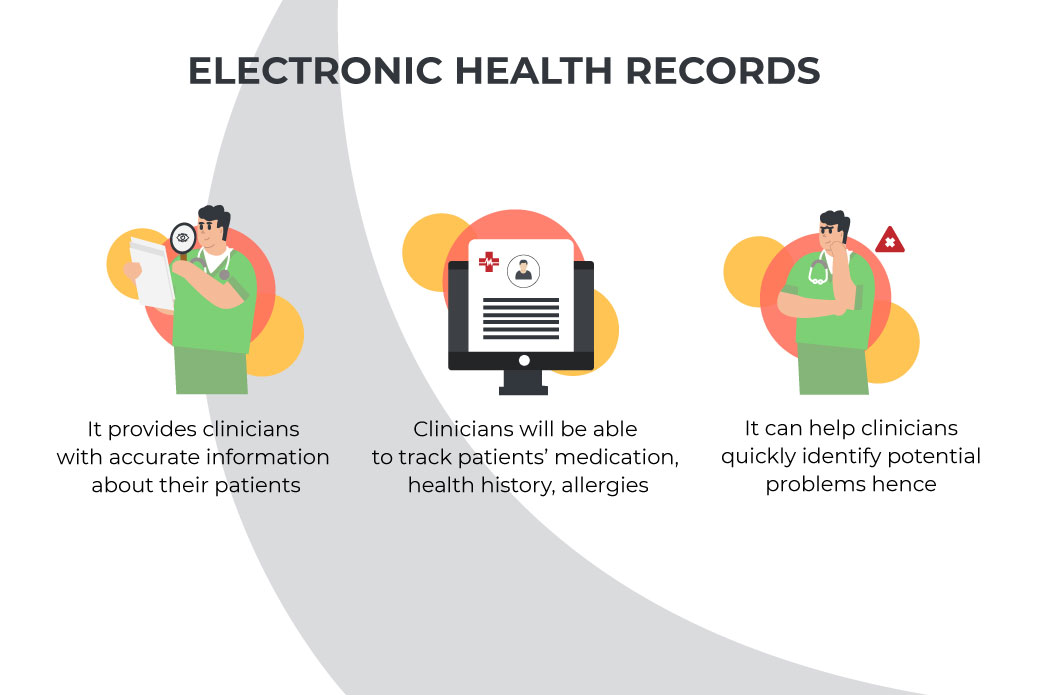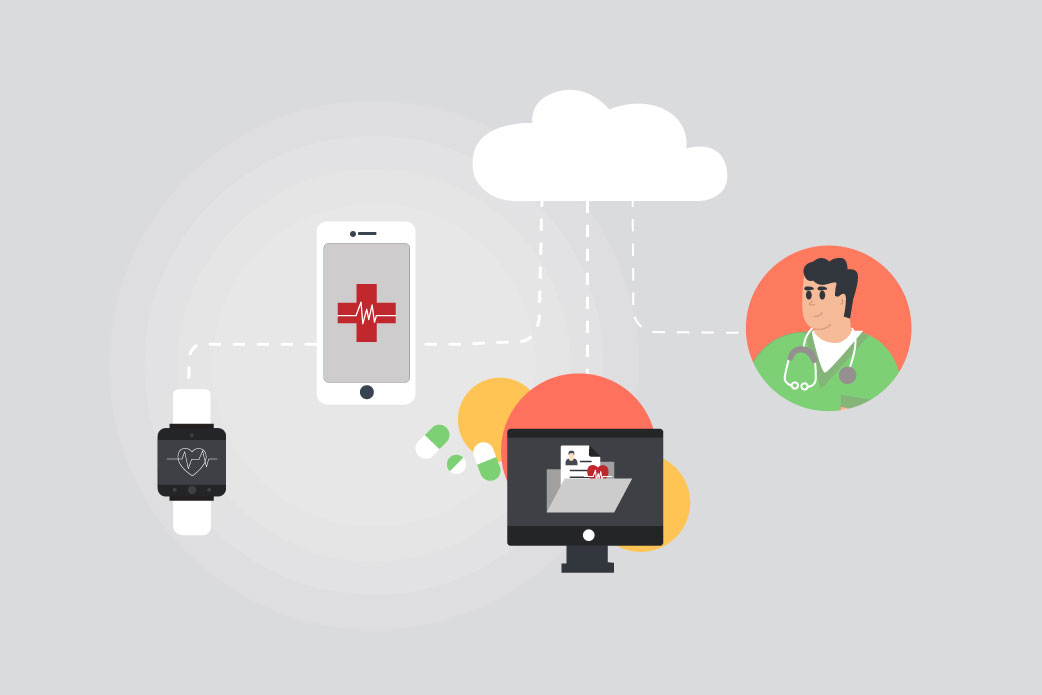Future of Wearable Technology in Healthcare
Wearable technology in healthcare is a term used to describe wearable medical technology that can be worn on the body to collect data or provide a function. This technology can include devices such as fitness trackers, smartwatches, and heart rate monitors. Wearable technology is likely to play a role in helping to improve patient care, make medical treatments more effective, and reduce the cost of healthcare.
What is Wearable Technology?
Wearable devices have become increasingly popular in recent years. This is due in part to the increasing availability of sensors that can accurately track a variety of data. The global wearable technology market size is projected to grow from USD 116.2 billion in 2021 to USD 265.4 billion by 2026, according to a report by MarketsandMarkets.
This growth is being driven by the increasing demand for smartwatches, fitness trackers, and other wearable devices such as skin patches, eyeglasses and clothing. The sports and fitness industry is benefiting from the growth of wearable technology as athletes and trainers gain access to more data about their performance. This data can help athletes and trainers push the boundaries of their training and improve their performance. In the business world, wearables are being used to improve the productivity of employees. Wearables such as the Apple Watch can be used to track the amount of time employees are spending on specific tasks and to provide feedback on how they can improve their productivity.
Learn more in our guide:
Apple & Google Smartwatches
Smartwatches are the most used wearable technology in healthcare society, with big-name corporations consistently pushing the product quality and functionality to a new height.
Apple has a history of developing apps and improving technology for detecting and analyzing irregular heart rhythms. The company has partnered with the American Heart Association (AHA) to create the Apple Heart Study, an app that uses the Apple Watch’s heart rate sensor to detect irregular heart rhythms. The app will notify participants if it detects an irregular heart rhythm, and participants will then be asked to take an electrocardiogram (ECG) to confirm the diagnosis. If the ECG confirms the diagnosis, the participant will be referred to a doctor.
On the other hand, Google is more interested in the data produced by healthcare. For example, they invested in Google Fit, which allows people to track their health data, such as their heart rate and blood pressure. These aforementioned devices are just some examples of medical software development services.
Electronic Health Records (EHR)
With the growth of wearable technology in healthcare system, we are seeing more wearable medical technology playing the significant role in securing our healthy lifestyle. With the help of such technology, each individual is essentially carrying a permanent digital version of a patient’s paper chart, known as electronic health records software (EHR).

So, how does electronic health records improve patient care? Basically, it provides clinicians with timely, accurate information about their patients. This allows clinicians to make better decisions about their patients’ care.
EHRs can help reduce medical errors in a number of ways. Clinicians will be able to track patients’ medication, health history, and allergies, which can help prevent Adverse Drug Events (ADE). They can also help clinicians make more informed decisions about their care and quickly identify potential problems hence, make corrections before they cause harm.
A number of studies published in The Journal of the American Medical Association (JAMA) found that hospitals that adopted EHRs were associated with a significant decrease in ADEs.
ADEs are a leading cause of preventable harm in hospitals, accounting for an estimated more than 7,000 deaths each year in the United States. The study found that hospitals that adopted EHRs were associated with a 24% decrease in the rate of ADEs.
Benefits of wearable technology in healthcare
The benefits of wearable technology in healthcare will predominantly revolve around the accessibility of health-focused lifestyle.
A health-focused lifestyle can be expensive and time-consuming for a modern city dweller. Changing the concept of a luxury lifestyle to an affordable one can take years of dedicated effort.
With the growing awareness of wearable technology in healthcare society, we are seeing more investment betting on wearable technology in healthcare to accelerate the accessibility of healthy lifestyle.
Nurse & Patient Interactions
Wearables provide a new set of advantages to nurses, including increased patient activity and engagement, accessibility to patients in remote areas, and the ability to diagnose issues more quickly. Nurses can use this data to assess patients and make changes in their care such as self-tracking data from wearables to help patients manage their health and activity levels, as well as identify any outliers that may need further attention.
Self-care & Health Awareness
Users can reap the full benefits of wearable technology in healthcare by empowering themselves to take a more active role in a health-focused lifestyle. This technology will effectively promote physical activity, decrease blood pressure and body mass index, and reduce readmission rates and cardiovascular events.

Impact of wearable technology in healthcare
Like most technologies, the impact of wearable technology in healthcare may be grouped into pros and cons, and it all depends on the implementation of wearable technology in healthcare.
We are witnessing many positive results of wearable technology in healthcare, which are brought to us by wearable medical technology. However, we need to take a step back and start noticing the potential problems it may cause.
More Data More Accuracy
Remote patient surveillance systems are becoming more comprehensive as wearables generate more data. This is due to the fact that wearables can track a wider range of health metrics than traditional patient monitoring systems. In addition, wearables can transmit data wirelessly, which allows for real-time monitoring of patients’ health status. As a result, healthcare providers can detect and address health issues before they become serious.
Wearables can help healthcare professionals monitor patients’ health more closely, which can lead to more timely and effective interventions. However, there are also some potential risks associated with wearable technologies. For example, if data from wearable devices is shared with third-party companies, it could be used for marketing or other purposes without the patients’ consent.
Potential Surveillance and Privacy Abuse
There is a trend of individuals sharing more personal data, which contradicts concerns about potential surveillance and privacy abuse. While there are valid concerns about how personal data may be used, individuals are increasingly sharing personal data online. Users must be aware of the potential risks of sharing personal data, including the possibility of surveillance and privacy abuse.
Overcome Surveillance and Privacy Abuse
The Health Insurance Portability and Accountability Act (HIPAA) requires that all healthcare providers protect the privacy of their patients’ health information. This includes the use of secure, encrypted storage for any data collected by wearable technology devices. In addition, developers must take steps to ensure that only authorized users can access this data. By following HIPAA guidelines, wearable technology developers can help protect the privacy of their patients’ health information.
More about:
Other Potential Risks in Wearable Technology
Some potential negative impact of wearable technology in healthcare associated with the use of wearable technology in healthcare include:
-
Device malfunction: Digital devices and wearable technology can malfunction, which could lead to inaccurate or incomplete patient data. Healthcare providers must take steps to ensure that devices are properly maintained and that data is backed up in case of a malfunction.
-
Health risks: There is some concern that the use of digital devices and wearable technology in healthcare may increase the risk of health problems, such as eye strain, neck pain, and carpal tunnel syndrome. Healthcare providers should advise patients of the potential risks associated with using these devices and take steps to minimize these risks.
Future of Wearable Technology in Healthcare
The future of wearable technology in healthcare will continue to sync both wearable fashion and health monitoring systems seamlessly to tailor specific needs and general market demand.
Wearable healthcare devices will connect seamlessly via secure cloud services and respond promptly to our daily behaviors and activities.
Advanced cloud technology will enable the capture of large data sets for use in machine learning and Artificial Intelligence (AI). This will allow a greater understanding of diseases and accelerate the development of new treatments.
Learn more about advantages of AI in medical field in our article:
AI-enabled devices will monitor a person’s health and behavior more comprehensively and sensitively than ever before. Undoubtedly, it will become an essential component to improve society’s health by providing immediate real-time feedback on health and behavior 24/7.
Conclusion
Wearable technology is the catalyst to restructure and reduce the cost of medical care in the future. It’s a major component in creating an affordable healthy lifestyle for our society. Not only that, but the future of mobile apps and wearable tech is now.
This a term used to describe wearable medical technology that may be worn on the body to collect data or provide a function
Wearable technology is likely to play a role in helping to improve patient care, make medical treatments more effective, and reduce the cost of healthcare.
Some examples are fitness trackers, smartwatches, and heart rate monitors
Heart conditions, allergies, adverse reactions to specific medicines, and many more